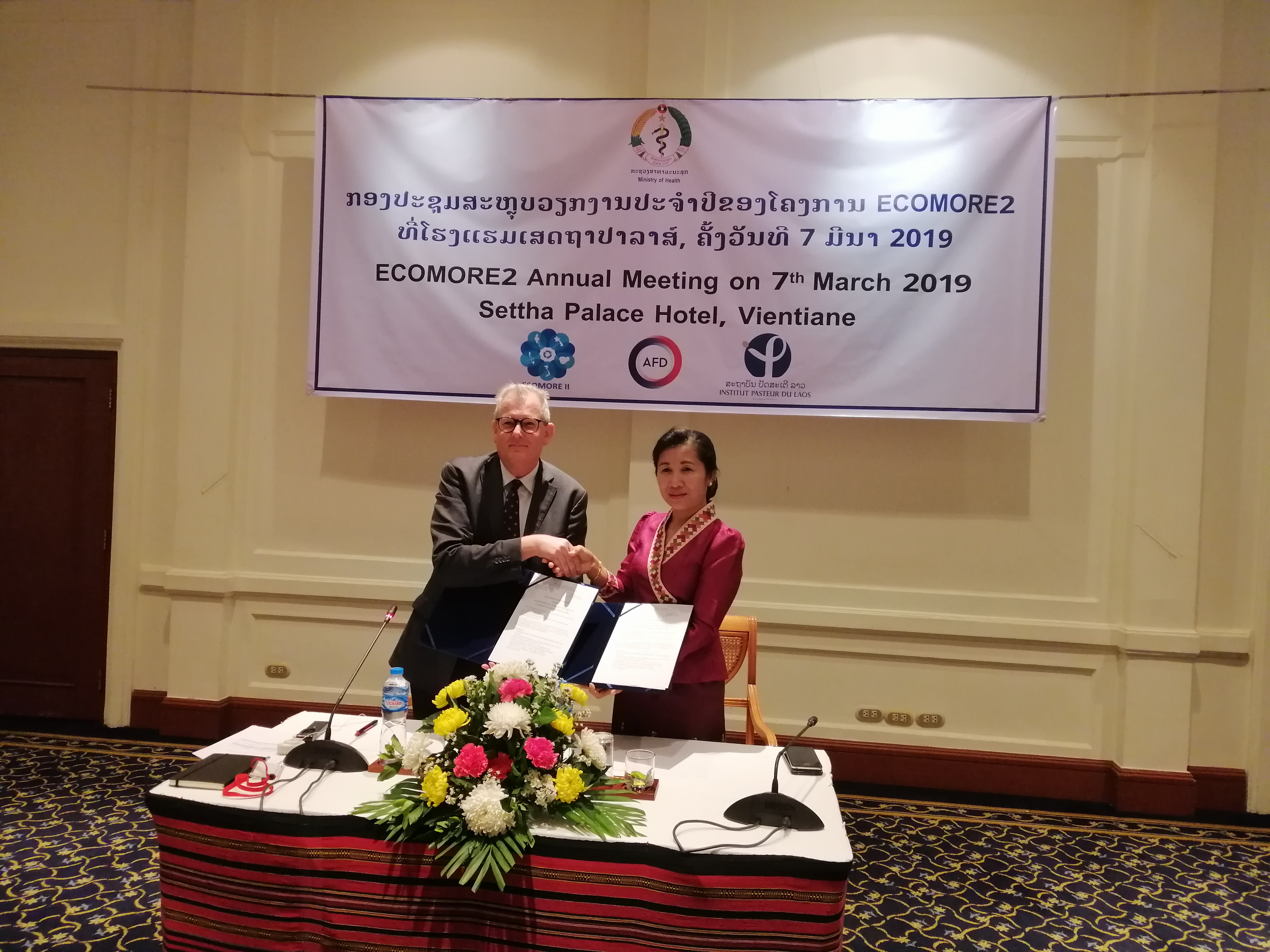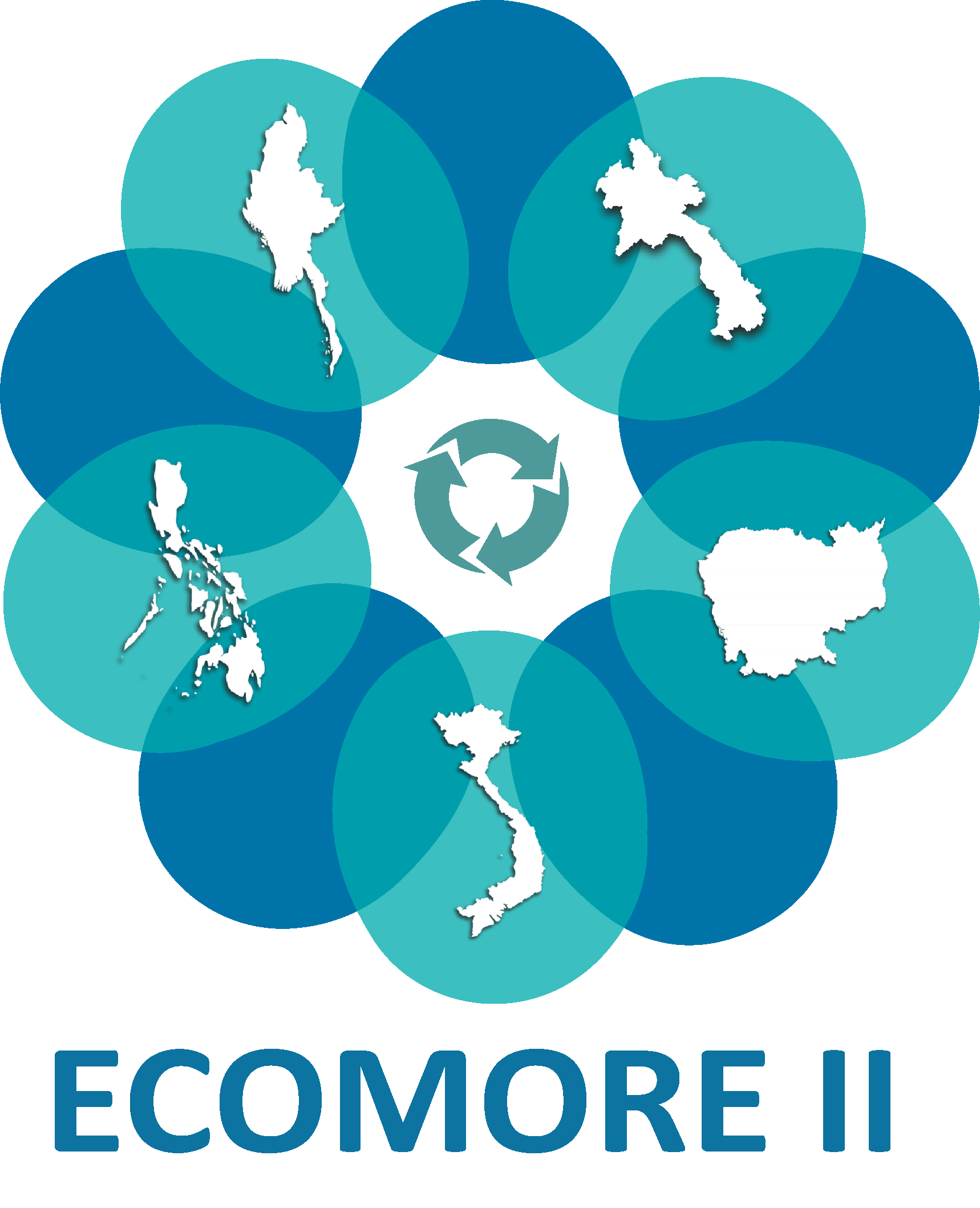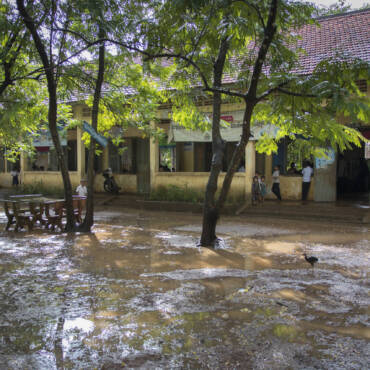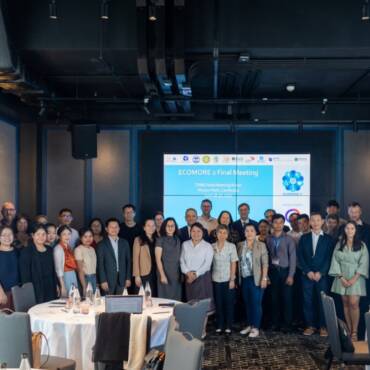Vientiane 07 March 2019
In line with the Annual Dengue Meeting held in December 2018 in Champasak, this Working Group brought together specialists of dengue surveillance and dengue control in Lao PDR to review and discuss dengue lab diagnosis. The main challenge was to come to an agreement for drafting national guidelines for standardization of lab techniques for confirmation of dengue cases before the next Annual Dengue Meeting scheduled in September 2019.
Actually, dengue can be routinely diagnosed by serological tests, or by molecular methods. Detection of viral nucleic acid by PCR or of viral protein by NS1 ELISA or by serology tests to detect IgM and IgG. Interpretation of analysis results require an understanding of the kinetics of dengue virus replication and host responses, as well as of the collection timing to confirm the diagnosis of dengue. Sensitivity and specificity of the tests, previous infections or cross reactivity with other flaviviruses can impair interpretation. This show that lab confirmation of dengue is complex and so participants debated on testing options and correlated algorithm.
The participants from NCLE, DCDC and hospitals pointed out the cost and difficulties to interpret RDT (Rapid Diagnostic Test) results. The NCLE will provide a refreshing training in 2019 to district health personnel to better use RDTs to test NS1, IgM and IgG. Participants acknowledged that dengue diagnosis is complex in Lao PDR where dengue is now endemic. According to Dr Khampe Phongsavath, measuring hematocrit on centrifuged blood is more relevant and cost effective at district level.


The variety of RDT used is also a concern. Actually hospitals purchased themselves tests from various origin without any validation by Health Authorities and consequently, quality, sensitivity and specificity can vary. There is a rapidly increasing number of RDTs but little regulation, so there participants pointed out the need for independent evaluation of diagnostic accuracy and of the robustness of such diagnostic through time and particularly in high ambient temperature.
Dr Manivanh Vongsouvath, deputy Head of Virology at LOMWRU presented the benefit of using Bioline Dengue Duo RDT (SD dengue RDT) that permit the concomitant detection of dengue NS1 antigen and anti-dengue Ig M and IgG; it has been demonstrated that the diagnostic accuracy of the SD Bioline Dengue Duo RDT remains stable even after long-term storage at high temperatures.
Marc Grandadam, Head of Virology Unit at Institut Pasteur in Lao PDR emphasized that deeper virological investigations are necessary to better identify risk factors leading to a severe or fatal dengue which can occur outside outbreaks. Phylogenetic analyses and DENV genotype distribution are necessary as well to determine factors leading to epidemic condition. It is admitted that severity of outbreaks of dengue is linked to the serotype circulating and to the immunity of the population but obviously studies conducted by IPL show that other important factors should intervene to explain these peaks of dengue.
Key persons from NCLE, DCDC, Institute of Diseases Prevention of Lao Army, Vientiane Capital Health Department, Vientiane Urban Development, National University, LOMWRU and District Hospitals participated actively in the discussions.
During this event, in the context of ECOMORE project, the Department of Health of the Municipality of Vientiane City and Institut Pasteur du Laos signed a Memorandum of Understanding on surveillance of dengue for the next 5 years.




Add Comment